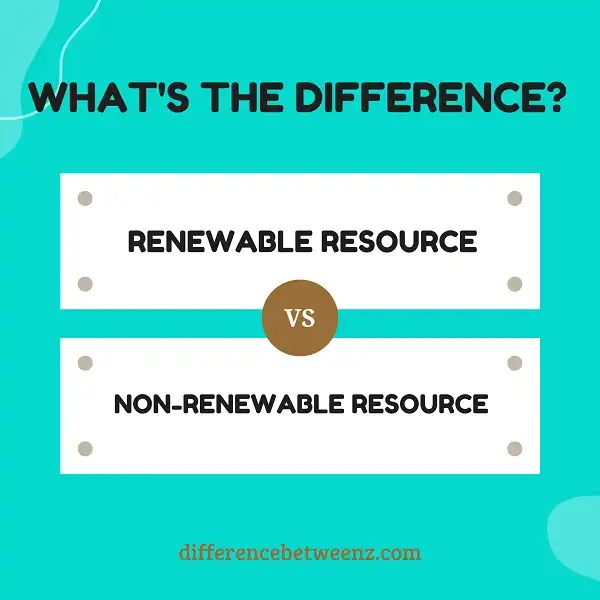Renewable Vs. Non-Renewable Resources
What is the Difference between Renewable and Non-renewable?
Natural resources are of great importance to humans and other creatures.
In general terms, they are categorized into two groups: renewable and non-renewable.
All resources, both renewable and non-renewable are especially used by people.
Hence the need for them is not to prevent misusing or wasting in any case.
Here below this post is all about the difference between renewable and non-renewable.
Difference between Renewable and Non-renewable
Renewable Resources
Renewable resources are those that do not deplete since they restore through natural processes; at a faster rate than their consumption.
For Eg, trees are renewable; because even if you cut them, they can easily grow back.
Air, water, are also renewable resources. Of these, the first two renewed by cycles.
But something very important to take into account is that although they are renewed we cannot exceed in its use,
We must handle them carefully so that we do not spend them at a faster rate than they are renewed and we must face scarcity of the same ones.
Put another way, renewable resources can be replaced; however, if the consumption rate becomes higher than the renewal rate, sustainability suffers.
You May also like to Read
Just as there are resources, there are also renewable energies; some examples that we know and we can mention are solar energy, wind, hydroelectric power; among others.
In short, renewable resources are renewable by nature or humans on their own.
Nonrenewable Resources
On the other hand, non-renewable resources include fossil fuels such as oil, coal, and natural gas.
These resources come directly from the earth and have a fixed amount which uses up over time.
They are usually divided into two groups: fossil fuels and nuclear fuels.
The nuclear ones are those that deal with the mining or refining of minerals like uranium. Nuclear fuels are the best and cleanest of non-renewable resources.
While Fossil fuels can take millions of years to re-form and are not clean source.
This is the main characteristic that differentiates them from renewable.
In conclusion, much emphasis lies on resource reuse and recycling; to guarantee their availability for the longest possible time.
Generally, renewable resources are clean and inexpensive (although at first, it takes a lot of money to exploit them); therefore, very good to handle and does not cause damage to the environment.
But non-renewable resources, although known for their efficiency; since they are able to produce a large amount of energy in a short time,
These are more expensive in the long run and cause some environmental damages.
On the other hand, the greatest disadvantage of non-renewable resources seems obvious (not renewed) and eventually depleted; besides, they are not very clean and they bring many dangers to the environment.
It is important to mention that 95% of the energy in the world derives from non-renewable resources.
Key differences between Renewable and Non-renewable Resources
- Renewable resources are replaceable and reuseable therefore, they do not disappear; while non-renewable ones eventually run out.
- Examples of renewable resources: water, crops, wind energy, geothermal energy, air and solar energy.
- Examples of non-renewable resources: coal, oil, natural gas, nuclear fuels.
Advantages of Renewable Resources
- Clean.
- maintainence costs are low.
- They are available in abundant quantities.
Disadvantages of renewable resources
- Still Unreliable.
- Low-efficiency Levels.
- Requires High Capital Input.
- Takes large space for Installations.
- Storage Costs are High.
- Still Generates Some Pollution
- Commercially Not Viable
Pros and Cons of Non-renewable Resources
- In the end they will disappear.
- They are not clean.
- They threaten the environment.
- In-efficient in energy production on massive scale.
- They can be noisy
Comparison table
| Renewable Resources | Non-Renewable Resources | |
| 1 | Nature renews and replenishes them in a short span of time. | They require a long geological time to replenish |
| 2 | They don’t exhaust quickly Eg Solar, water, wind, forest |
They exhaust quickly Eg. Fossil Fuels, Minerals |
| 3 | Classification in 2 categories continuous or flow |
Classification in 2 categories recyclable of non-recyclable |
| 4 | Not-Affected by human activities | Affected by human activities |
| 5 | Environment friendly and less polluting | They are the cause of major pollution |


